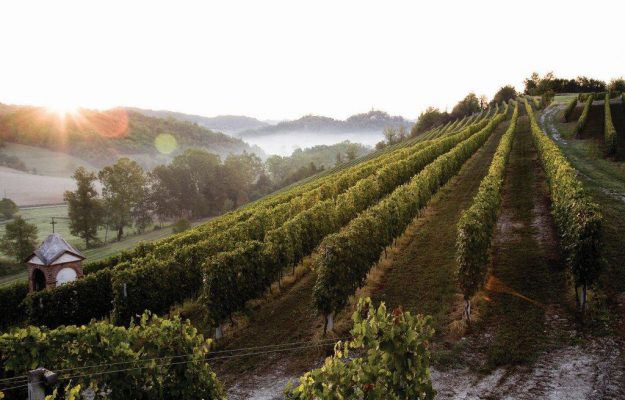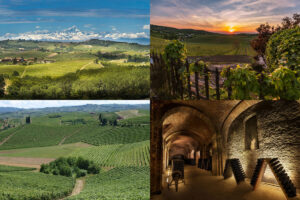The Consorzio di Tutela Vini Colline del Monferrato Casalese has promoted a storytelling project from a different point of view. It will tell visitors about the wines and wineries, starting from the geological characteristics of the land in which the vineyards are located. Therefore, information panels with all the details on the composition and history of the various plots will be installed. This is the first project of its kind in Italy, and it was carried out with the scientific contribution of the geologist and sedimentology expert, Alfredo Frixa. The project is the logical and subsequent step to the previous mapping of the Monferrato Casalese areas, “I cru di Enogea”, carried out by the cartographer and science communicator, Alessandro Masnaghetti, including a geological compendium, edited in collaboration with Alfredo Frixa.
The first 50 panels were recently delivered to 25 member winegrowers (2 for each company), to be installed in the most visible points in the vineyards as well as in the wineries and tasting rooms. Each panel will fully describe the geological formation of the substrate, the age, how deep the sea is, the basin, indications of the geological period, as well as the positioning of the vineyard, the physical characteristics of the rocks, marine environments of the past and the granulometry referring to the sand (mineral and fossils), in addition to microscope images. Further, in support of the data collected, the percentages of sand, silt, clay, calcium carbonate and pH were also considered. All of the panels will furthermore indicate the company’s data and a QrCode that will refer to the various sites where information can be found, also in English. “In general”, Claudio Coppo, president of the Consortium explained, “the project aims to promote and enrich the Monferrato wine area, giving wineries an additional story that tells about the geodiversity of their vineyards in a simple and clear way”. “Moreover”, the vigneron Ermanno Accornero continued, “it will also be useful to all the future steps necessary to be taken to define the Crus of Grignolino del Monferrato Casalese”.
“The first results”, the geologist Alfredo Frixa explained, “have already shown that Grignolino is planted on at least 9 different geological units. The oldest part is the Casale Monferrato Formation or “Marne da Cemento”, which was deposited 56-38 million years ago (Eocene) in the Ligurian-Piedmontese Ocean. We find these soils, as well as others, in Ozzano Monferrato. The Cardona Formation, of the Oligocene age (33-28 million years ago), follows, and it represents the beginning of the Piedmontese Tertiary Basin (a sea that covered Monferrato, Langhe, Roero and the Turin Hills), which, at the moment has the most vines planted, and 6 registered areas (Lu-Cuccaro, Vignale Monferrato, Frassinello Monferrato, Olivola, Ozzano Monferrato and Castelletto Merli). Then, the deep sea Antognola Formation (Oligocen-Miocene; on average, 25 million years ago), and part of Ottiglio and Serralunga di Crea; the more recent Pietra da Cantoni tropical sea (Miocene; 17-15 million years, present in Rosignano Monferrato and Ozzano Monferrato; followed by Tonengo Arenites (Miocene: 15-14 million years) in Ottiglio Monferrato and Ponzano Monferrato. Continuing on, the deep sea sediments of the Marne di Sant’Agata Fossils, important in the Barolo area (11-7 million years ago), present in Vignale Monferrato, Sala Monferrato and Treville; the deposits containing gypsum from the end of the Miocene (7-5 million years fa) of the Chaotic Complex of Valle Versa present in Terrugia, Rosignano Monferrato and Cella Monte, and of the Vena del Gesso (Vignale Monferrato), when the Mediterranean became a large salt lake due to closing the Strait of Gibraltar and interrupting connections with the Atlantic Ocean. The story ends 4-3 million years ago with the Sands of Asti (Pliocene) the vineyards of Vignale Monferrato and Cuccaro. In this last period, the hills were largely emerged from the sea”.
Copyright © 2000/2025
Contatti: info@winenews.it
Seguici anche su Twitter: @WineNewsIt
Seguici anche su Facebook: @winenewsit
Questo articolo è tratto dall'archivio di WineNews - Tutti i diritti riservati - Copyright © 2000/2025








































































































































































































